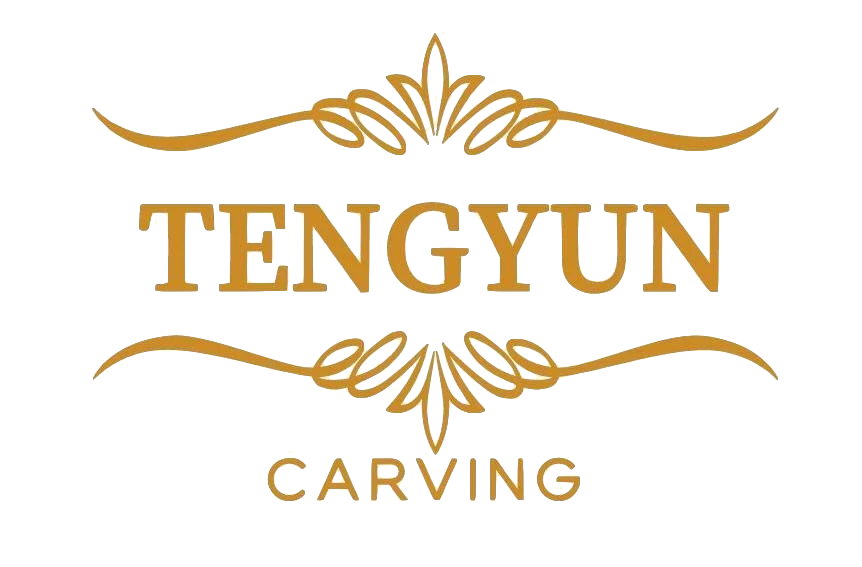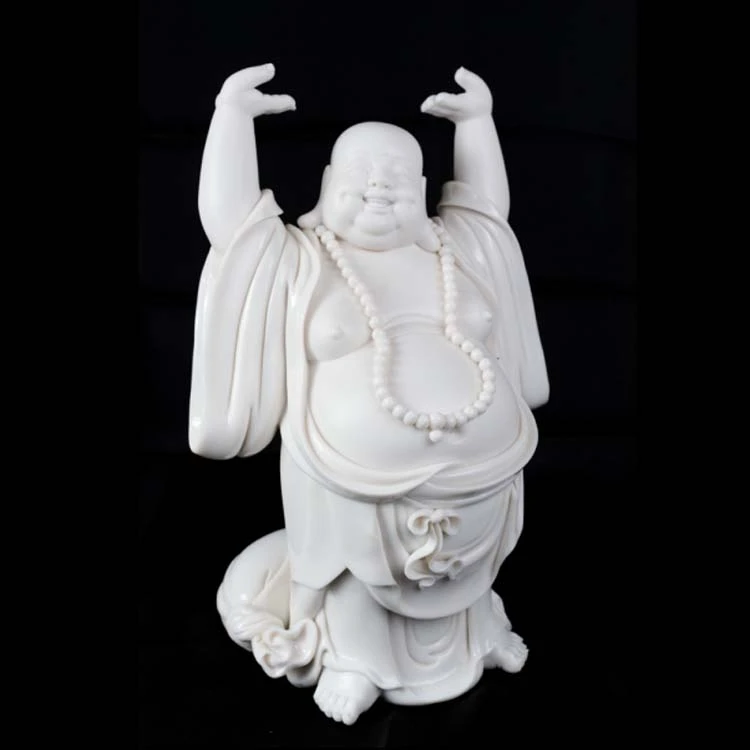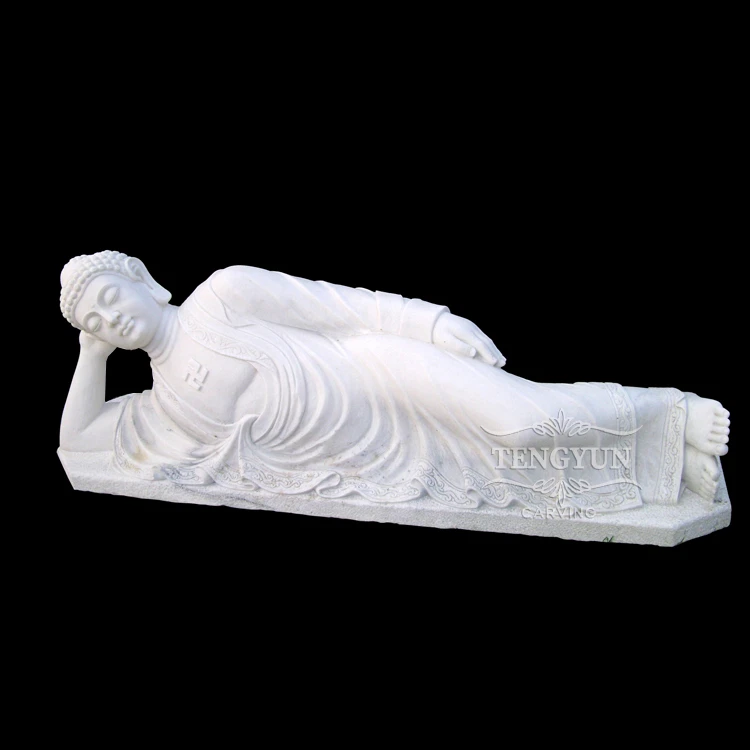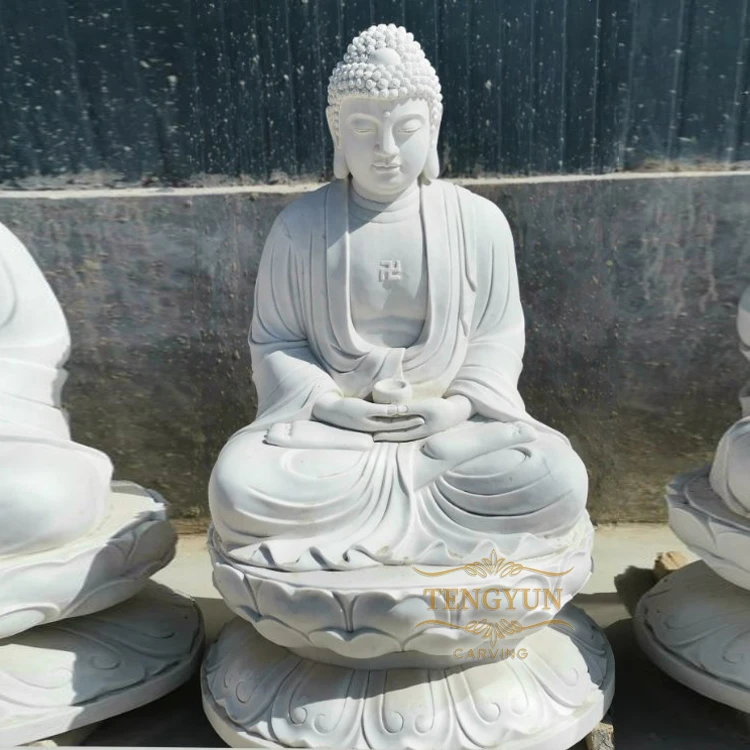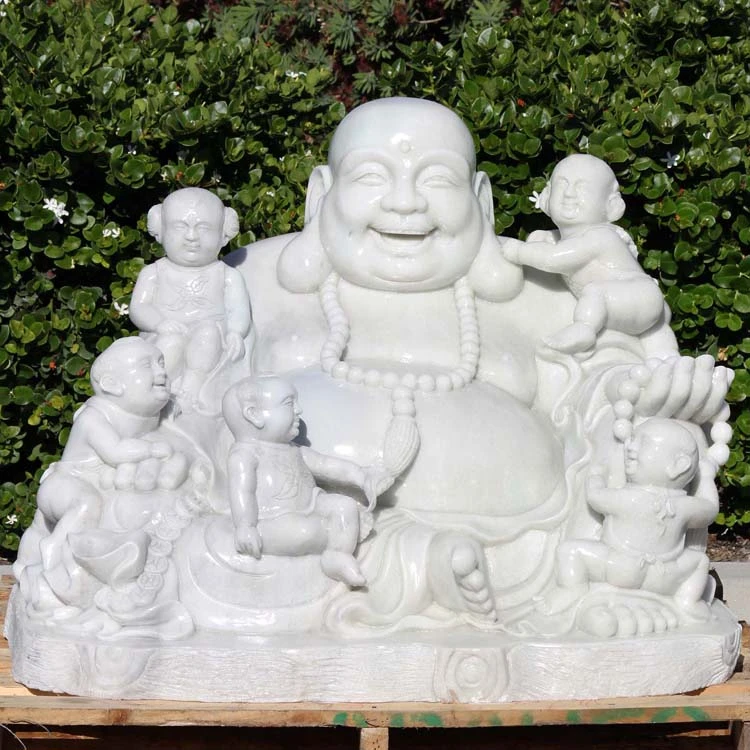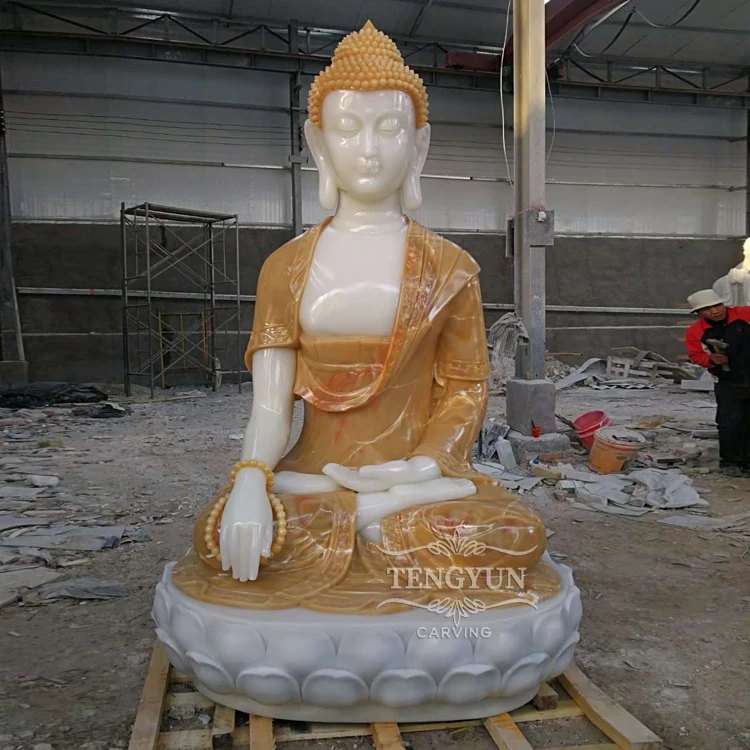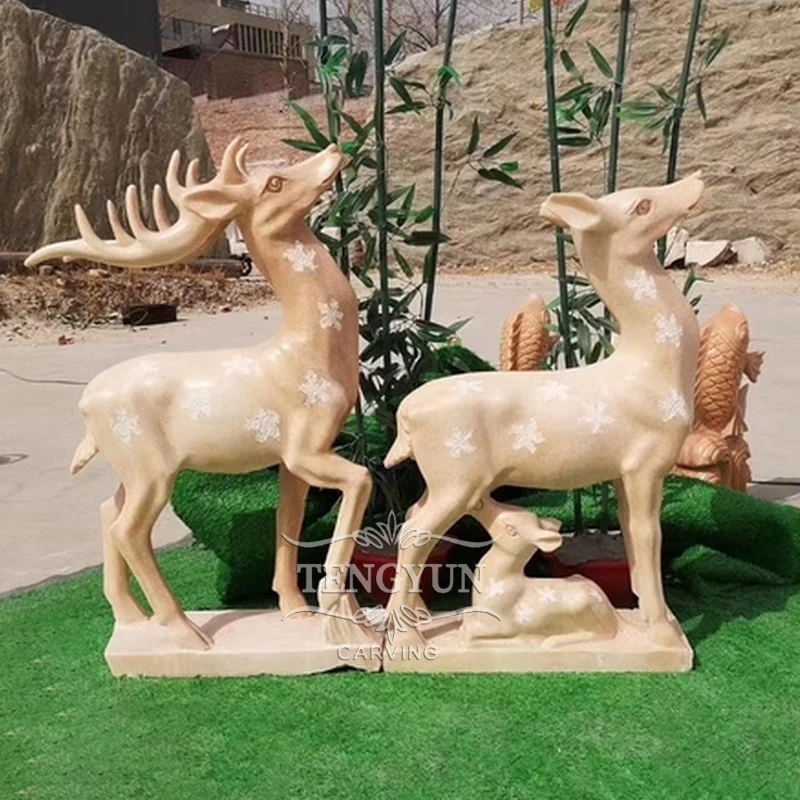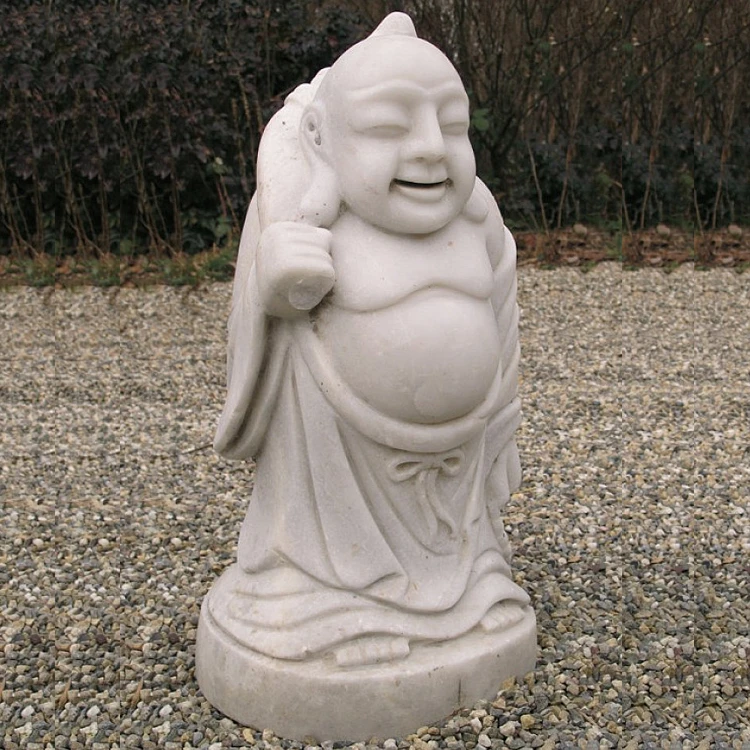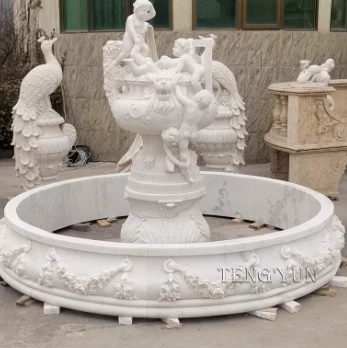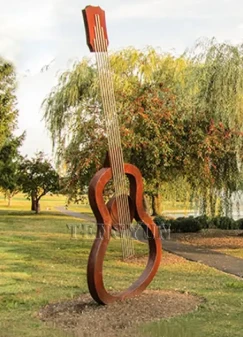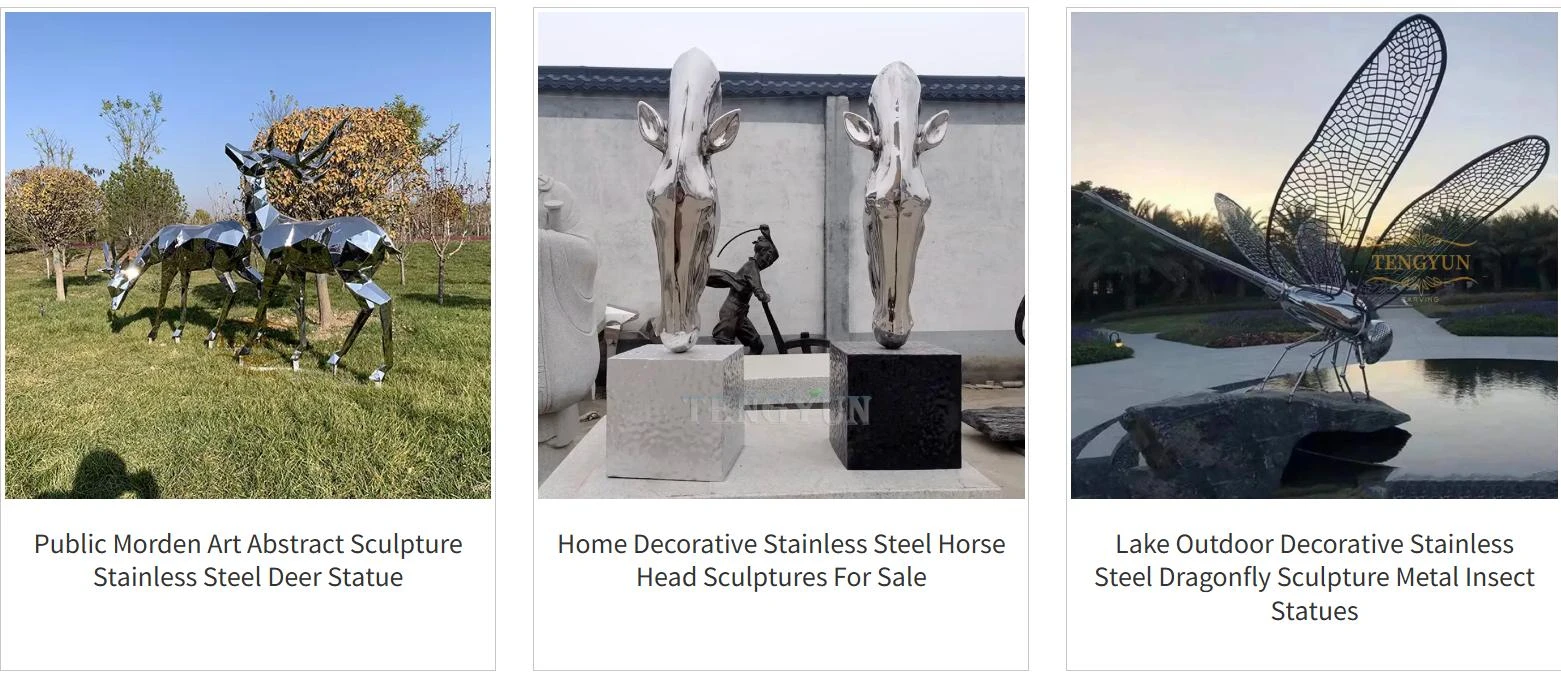Art Stone Sculpture: Large Marble Statues & Greek Replicas
The Enduring Legacy of Art Stone Sculpture in Modern B2B Applications
In the sophisticated realm of high-end architecture, bespoke interior design, public art installations, and historical preservation, the demand for authentic and meticulously crafted art stone sculpture is experiencing a significant resurgence. Far from being merely decorative elements, these timeless pieces represent a profound investment in cultural heritage, aesthetic value, and enduring quality. For B2B decision-makers, understanding the intrinsic value, complex manufacturing processes, and strategic advantages of incorporating such works is crucial. This comprehensive guide delves into the technicalities, market trends, and practical applications that elevate art stone sculptures beyond mere artifacts to significant assets.
The market for custom and historically accurate stone sculptures is driven by an appreciation for unparalleled craftsmanship and the inherent durability of natural materials. Clients, ranging from luxury hotel developers to governmental heritage bodies and private collectors, seek not only artistic integrity but also technical precision and adherence to international quality standards. This article will unpack the intricacies of creating masterworks, such as a Roman statue marble Gaius Julius Caesar statue, demonstrating how traditional artistry merges with modern engineering principles to deliver products of exceptional quality and longevity.
Current industry trends highlight a growing interest in historically accurate reproductions and monumental works. Projects demanding big marble statue pieces, often inspired by classical periods such as ancient greek marble sculpture, require specialized expertise in material sourcing, structural integrity, and artistic interpretation. This niche, yet high-value, segment of the B2B market is characterized by meticulous planning, advanced fabrication techniques, and stringent quality control.
The Genesis of Permanence: Art Stone Sculpture Manufacturing Processes
The creation of a high-quality art stone sculpture is a multi-stage process that marries artistic vision with engineering precision. It begins long before the first chisel strikes the stone, with meticulous planning and material selection.
1. Material Selection and Characterization
The choice of stone is paramount, influencing both the aesthetic and the longevity of the final piece. Common materials include various types of marble (Carrara, Pentelic, Statuario), granite, limestone, and sandstone. Each type possesses distinct geological properties, including Mohs hardness, compressive strength, porosity, and color consistency. For a monument like a Roman statue marble Gaius Julius Caesar statue, Carrara marble is often favored for its fine grain, pure white color, and historical authenticity, providing an ideal medium for intricate detailing. Our material sourcing adheres to strict geological survey reports and provenance verification to ensure material integrity and ethical extraction.
2. Conceptualization and Digital Prototyping
Modern art stone sculpture manufacturing integrates advanced digital techniques. This phase involves detailed conceptualization, often starting with historical research for accurate reproductions, or artistic renderings for custom designs. 3D scanning of existing artifacts, or 3D modeling from sketches and blueprints, allows for the creation of high-fidelity digital prototypes. This digital blueprint serves as the master guide, ensuring precise scaling, anatomical accuracy, and proportional integrity. Complex designs for ancient greek marble statues, for instance, benefit immensely from this stage, allowing for detailed adjustments before any stone is touched.
3. Roughing and Precision Carving
The initial phase of carving, known as roughing, involves reducing the raw stone block to the general form of the sculpture. While traditional hand-carving methods are still employed for their artistic touch, large-scale projects, particularly for a big marble statue, frequently utilize CNC (Computer Numerical Control) machining. Multi-axis CNC milling machines, guided by the 3D digital model, can rapidly and accurately remove bulk material, creating a highly precise rough form. This significantly reduces the time and labor for initial shaping, while maintaining an unparalleled level of precision.
Following the CNC roughing, skilled artisans take over for the precision carving and detailing. This is where the true artistry of art stone sculpture comes to life. Using a variety of chisels, hammers, rasps, and other specialized tools, sculptors meticulously refine the features, adding textures, expressions, and intricate patterns. Techniques like point carving, where measurements are transferred directly from a model to the stone, ensure fidelity to the original design or historical reference.
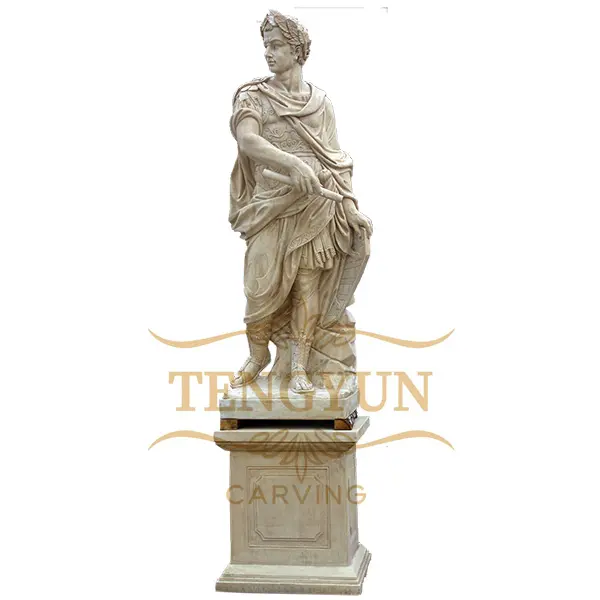
Image: Artisans meticulously crafting an art stone sculpture, showcasing the blend of traditional techniques with modern precision.
4. Finishing and Polishing
The final stages involve refining the surface of the sculpture. This includes sanding, honing, and polishing to achieve the desired texture and sheen. Different levels of polish can be applied, from a matte finish that emphasizes the natural grain of the stone to a high-gloss polish that reflects light brilliantly and highlights subtle details. For outdoor installations, specific sealants might be applied to enhance weather resistance without compromising the stone's natural beauty.
5. Quality Assurance and Inspection Standards
Quality control is integrated at every stage, from raw material inspection to the final surface finish. Our processes adhere to rigorous international standards such as ISO 9001 for quality management systems, ensuring consistency and excellence. Key inspection points include:
- Material Purity and Integrity: Verification of stone type, density, and absence of significant geological flaws (e.g., major veins, cracks).
- Dimensional Accuracy: Utilizing digital calipers and laser scanners to ensure the sculpture precisely matches the approved digital model and specifications, crucial for large-scale commissions or replicas of ancient greek marble sculpture.
- Surface Finish and Detail Fidelity: Visual and tactile inspection for tool marks, inconsistencies, and the fidelity of intricate details to the design.
- Structural Integrity: For monumental pieces, stress analysis and internal reinforcement (e.g., stainless steel armatures) are carefully evaluated to ensure long-term stability and safety.
- Longevity and Environmental Resistance: Assessment of the stone's natural resistance to weathering, UV radiation, and environmental pollutants. For outdoor applications, our stone sculptures typically exhibit a service life extending well beyond 100 years, with proper maintenance.
The meticulous attention to these standards ensures that each art stone sculpture delivered is not just an artistic triumph but also a technically sound and durable investment.
Technical Specifications and Performance Metrics for Stone Sculptures
Understanding the technical parameters of art stone sculpture is crucial for B2B clients, especially when specifying materials for large-scale projects or high-traffic environments. Below is a comparative table of typical specifications for marble, a primary material for many ancient greek marble statues and Roman-era replicas, illustrating its performance characteristics.
Product Spotlight: Roman Statue Marble Gaius Julius Caesar Statue
Our flagship Roman statue marble Gaius Julius Caesar statue exemplifies the fusion of historical accuracy, artistic mastery, and robust material science. Crafted from premium Italian Carrara marble, this piece is designed for monumental presence and long-term durability, making it ideal for historical institutions, luxury estates, and public installations seeking an authentic representation of classical antiquity.
| Parameter | Typical Marble (e.g., Carrara) | Industry Standard / Requirement | Relevance for Art Stone Sculpture |
|---|---|---|---|
| Mohs Hardness | 3-4 | Adequate for carving; resistant to minor abrasions. | Indicates carvability and scratch resistance. Higher hardness implies more durability against environmental wear but also harder to sculpt. |
| Compressive Strength (MPa) | 70-120 | ASTM C170 Minimum: 69 MPa | Crucial for load-bearing capacity and structural integrity, especially for large, self-supporting big marble statue pieces. |
| Flexural Strength (MPa) | 8-15 | ASTM C880 Minimum: 6.9 MPa | Resistance to bending or breaking under stress. Important for slender or cantilevered elements. |
| Water Absorption (%) | 0.1-0.2 | ASTM C97 Max: 0.2% | Lower absorption indicates better resistance to freeze-thaw cycles and staining, critical for outdoor installations of art stone sculpture. |
| Density (g/cm³) | 2.6-2.8 | Varies by stone type. | Affects weight and handling. Higher density often correlates with greater durability. |
| Abrasion Resistance (Ha) | 10-15 | ASTM C241 Min: 10 | Ability to resist surface wear from friction, crucial for public access sculptures. |
| Acid Resistance | Poor (Calcium Carbonate based) | Not directly specified, but a known characteristic. | Marble reacts with acids (e.g., acid rain). Requires consideration for outdoor environments and maintenance. Granites are superior in this aspect. |
These parameters are fundamental for architects, conservators, and project managers in assessing the suitability of a stone for its intended environment and longevity. For our Roman statue marble Gaius Julius Caesar statue, the selection of premium Carrara marble ensures optimal balance between aesthetic purity and structural integrity for both indoor and protected outdoor settings.
Strategic Applications and Advantages in Diverse B2B Contexts
The application of art stone sculpture extends across a myriad of B2B sectors, each leveraging the unique attributes of these durable and aesthetically rich creations.
1. Museums and Historical Preservation
For museums, galleries, and historical institutions, precision replicas of historical ancient greek marble sculpture or ancient greek marble statues are invaluable. They allow for the display of historically significant works without risking damage to priceless originals, especially those too fragile for public access. Our expertise in forensic research and 3D scanning technology ensures reproductions that are virtually indistinguishable from their historical counterparts, preserving cultural narratives with unparalleled accuracy.
2. Luxury Real Estate and Hospitality
High-end residential developments, luxury hotels, and premium commercial spaces utilize art stone sculpture to establish an unparalleled ambiance of sophistication and grandeur. A strategically placed big marble statue in a grand foyer or a series of classically inspired pieces in an outdoor landscape design elevates the property's perceived value and creates a memorable aesthetic experience for discerning clientele. The inherent durability of stone also translates into minimal maintenance requirements, providing a long-term, cost-effective aesthetic solution.
3. Public Art Installations and Urban Development
Civic projects, urban parks, and plazas frequently commission large-scale art stone sculpture. These pieces serve as cultural landmarks, enhancing public spaces and reflecting civic pride. Their resilience to weathering, vandalism, and general wear-and-tear makes them ideal for outdoor, high-traffic environments. Unlike more fragile materials, stone statues offer a robust, long-term solution that withstands the rigors of public interaction and varying climatic conditions.
4. Landscape Architecture and Private Estates
In expansive gardens and private estates, stone sculptures integrate seamlessly with natural elements, providing focal points and defining outdoor "rooms." The natural patina that develops on stone over time further enhances its beauty, blending the art piece with its environment. Advantages include resistance to UV degradation, fungal growth, and structural stability in diverse outdoor conditions.
Key Technical Advantages:
- Exceptional Durability: Stone, especially marble and granite, boasts superior resistance to weathering, temperature fluctuations, and physical impact compared to materials like resin or plaster. This ensures a multi-generational lifespan, minimizing the need for costly replacements.
- Low Maintenance: Unlike metals that can corrode or composites that degrade, natural stone requires minimal ongoing maintenance, primarily periodic cleaning, making it a cost-effective long-term investment.
- Timeless Aesthetic Value: The classic appeal of stone sculptures, exemplified by masterworks such as the Roman statue marble Gaius Julius Caesar statue, transcends fleeting trends, guaranteeing enduring artistic and financial value.
- Material Integrity: Each stone block is unique, offering natural variations in veining and color that contribute to the distinctiveness of every art stone sculpture, ensuring authenticity that artificial materials cannot replicate.
- Environmental Sustainability: Sourcing natural stone, when done responsibly, offers a sustainable alternative to synthetic materials, aligning with green building initiatives and corporate social responsibility goals.
Industry Trends, Manufacturer Comparison, and Customization Solutions
The landscape of art stone sculpture manufacturing is evolving, driven by technological advancements and shifting client demands. A key trend is the increasing sophistication of digital fabrication, which complements, rather than replaces, traditional handcraftsmanship.
Current Industry Trends:
- Hybrid Manufacturing: The integration of advanced CNC machinery for initial roughing and blocking, followed by intricate hand-finishing by master sculptors. This synergy ensures both precision and artistic soul in every art stone sculpture.
- Historical Accuracy Demands: A heightened focus on archaeological and historical fidelity, especially for reproductions of ancient greek marble statues and Roman works. This requires extensive research capabilities and expert historical consultants.
- Sustainable Sourcing: Growing emphasis on ethically sourced stone from quarries that adhere to environmental and labor best practices.
- Large-Scale and Monumental Works: Increasing commissions for big marble statue pieces for public spaces and grand private residences, necessitating robust engineering and logistical capabilities.
Manufacturer Comparison: Key Differentiators
When selecting a supplier for art stone sculpture, B2B clients should evaluate more than just price. Critical factors for comparison include:
- Artistic Expertise & Sculptor Pedigree: Verify the qualifications and portfolio of the artisans involved. A supplier with a team of seasoned master sculptors, some with decades of experience in working with historical forms like ancient greek marble sculpture, is paramount.
- Technological Integration: Assess the balance between traditional craftsmanship and modern technology (e.g., 3D scanning, CNC capabilities) for efficiency, precision, and scalability.
- Material Sourcing & Quality Control: Transparency in material origin and adherence to international material testing standards (e.g., ASTM, EN).
- Project Management & Communication: The ability to manage complex, multi-stage projects, provide regular updates, and ensure seamless communication from conceptualization to delivery.
- Customization Capabilities: The breadth of services offered, from design consultation and material recommendations to bespoke commissions and installation support.
- Portfolio & References: A robust track record of successful projects for reputable clients, demonstrating diverse capabilities and consistent quality. Look for experience with projects similar to your requirements, whether it's a small bust or a monumental big marble statue.
Tailored Customization Solutions:
Our approach emphasizes bespoke solutions tailored to unique client requirements. Whether it's replicating a specific historical figure like the Roman statue marble Gaius Julius Caesar statue, creating a contemporary abstract form, or executing a monumental commission, our customization process includes:
- Detailed Design Consultation: Collaborating closely with clients, architects, and designers to translate initial concepts into feasible and artistic designs.
- Material Specialization: Advising on the optimal stone type based on aesthetic goals, environmental exposure, and budget.
- Scale and Proportional Adjustment: Expertise in scaling sculptures to fit specific architectural spaces, maintaining proportional accuracy regardless of size.
- Finishing Variations: Offering a range of finishes from rough-hewn to highly polished, and custom patinas.
- Installation Planning & Logistics: Providing comprehensive support for the safe and efficient delivery and installation of even the largest big marble statue pieces.
Experience in Action: Application Cases and Client Feedback
Our commitment to excellence in art stone sculpture is best demonstrated through tangible applications and the trust placed in us by our clients. With over two decades of experience, we have successfully delivered countless projects, ranging from intricate historical reproductions to bespoke contemporary works.
Case Study 1: Grand Museum Entrance Restoration
Challenge: A prominent national museum required an exact replica of a heavily weathered, historically significant ancient greek marble statue for its main entrance. The original was too fragile for outdoor display, yet its presence was crucial to the museum's identity.
Solution: We utilized advanced 3D scanning to capture the original's precise geometry, including its subtle imperfections, allowing us to create a digital twin. Our master sculptors then meticulously carved the replica from a single block of high-grade Pentelic marble, chosen for its historical accuracy and durability for outdoor exposure. The piece underwent rigorous quality checks, including material composition analysis and dimensional verification, to ensure it met museum-grade standards for authenticity and longevity.
Outcome: The replica seamlessly integrated into the museum's facade, indistinguishable from the original to the casual observer. The museum reported a significant increase in positive visitor feedback regarding the "restored" grand entrance, without risking the original artifact. This project showcased our capability in delivering high-fidelity reproductions of ancient greek marble sculpture, ensuring historical and aesthetic integrity.
Case Study 2: Luxury Residential Estate - Monumental Roman Figures
Challenge: A luxury real estate developer sought to commission a series of four big marble statue pieces, including a focal Roman statue marble Gaius Julius Caesar statue, for the central courtyard of a new, ultra-high-end residential complex. The requirement was for imposing, historically inspired figures that could withstand varied weather conditions while exuding opulence.
Solution: We provided comprehensive design consultation, proposing Statuario marble for its striking white appearance and resilience. Each statue was designed to complement the architectural style, with custom bases for secure installation. Our team handled the entire process from conceptual modeling and material selection to carving, finishing, and meticulous logistical planning for safe transport and installation of these monumental pieces. Structural engineers were consulted to ensure the stability of the statues, especially given their significant weight and outdoor exposure.
Outcome: The statues became the signature elements of the development, garnering effusive praise from residents and potential buyers. The developer noted that the sculptures significantly enhanced the property's prestige and marketability, proving the strategic value of investing in high-quality art stone sculpture.

Image: A grand art stone sculpture of Julius Caesar, demonstrating its impactful application in a high-end landscape.
Client Testimonial Excerpt:
"The Roman statue marble Gaius Julius Caesar statue we commissioned exceeded our highest expectations. The level of detail and the quality of the marble are simply unparalleled. Their team managed the entire process flawlessly, from initial design concepts to the final installation. It's a true masterpiece and a testament to their expertise. We highly recommend them for any significant art stone sculpture project." - Project Manager, Heritage Redevelopment Group.
Ensuring Trust and Value: After-Sales and Support
Trustworthiness in the B2B art market is built not only on the quality of the product but also on comprehensive support and transparent commitments. We prioritize clear communication, reliable logistics, and robust after-sales service to ensure complete client satisfaction for every art stone sculpture.
Frequently Asked Questions (FAQ)
- Q: How long does it take to produce a custom big marble statue?
- A: Production time varies significantly based on complexity, size, and material. For a piece like a Roman statue marble Gaius Julius Caesar statue, it can range from 8 to 20 weeks from design approval to completion, excluding shipping. We provide a detailed project timeline at the outset.
- Q: What is the typical service life of an outdoor art stone sculpture?
- A: With proper material selection and minimal maintenance, a well-crafted natural stone sculpture can last for centuries. Marble, for example, is known for its incredible longevity, as evidenced by countless ancient greek marble statues still standing today. We ensure optimal material and structural design for the intended environment.
- Q: Do you offer installation services?
- A: While we primarily focus on fabrication and delivery, we provide comprehensive installation guidelines, detailed schematics, and can coordinate with your local installation teams, or recommend experienced specialists for large or complex installations. Our support extends to advising on foundational requirements for heavy pieces.
- Q: What kind of warranty do you provide?
- A: We offer a limited warranty covering material defects and structural integrity for a specified period, typically 5-10 years, depending on the material and application. This covers issues arising from our manufacturing process, ensuring peace of mind for your investment in an art stone sculpture.
Delivery and Logistics
Our logistics team specializes in the secure and timely global delivery of valuable and often heavy art stone sculpture. We utilize custom-built, reinforced crates and engage reputable, insured freight forwarders experienced in handling fragile and oversized cargo. Each shipment is fully insured, and clients receive real-time tracking updates from dispatch to arrival. Our average international delivery cycle, post-production, ranges from 2-6 weeks depending on destination and customs procedures. Detailed packing lists and customs documentation are provided to ensure a smooth import process.
Comprehensive Customer Support
Our dedicated client support team is available throughout the project lifecycle and beyond. From initial consultation and design modifications to after-sales inquiries and maintenance advice, we are committed to providing responsive and expert assistance. We offer guidance on proper cleaning, conservation, and repair of your art stone sculpture, ensuring its beauty and integrity for generations. Our service commitment underpins the lasting value of your artistic investment.
Conclusion: Investing in Enduring Artistry and Value
The decision to invest in art stone sculpture, particularly for B2B applications, is a strategic choice for clients seeking unparalleled aesthetic appeal, historical resonance, and long-term durability. From precise historical reproductions like the Roman statue marble Gaius Julius Caesar statue to monumental contemporary works, these pieces are more than decorative elements; they are significant assets that elevate environments, enrich cultural narratives, and withstand the test of time.
Our expertise, experience, authority, and trustworthiness in the field of art stone sculpture production ensure that every commission is executed with the highest standards of craftsmanship and technical precision. By blending centuries-old artisanal techniques with cutting-edge technology, and adhering to rigorous quality control protocols, we deliver sculptures that are not only visually stunning but also engineered for enduring performance in diverse commercial and public settings. Partnering with us means securing an investment that will continue to inspire and impress for generations to come.
References and Authoritative Sources
- ASTM International. (Various Standards). C170/C170M-16: Standard Test Method for Compressive Strength of Dimension Stone, C880/C880M-16: Standard Test Method for Flexural Strength of Dimension Stone, C97/C97M-15: Standard Test Methods for Absorption and Bulk Specific Gravity of Dimension Stone, C241/C241M-15: Standard Test Method for Abrasion Resistance of Stone Subjected to Foot Traffic.
- International Organization for Standardization. (Various Standards). ISO 9001: Quality Management Systems – Requirements.
- Conservation Institute. Materials and Processes in Sculpture Conservation.
- The Getty Conservation Institute. Technical Studies in the Arts.
- Marble Institute of America (MIA). Dimension Stone Design Manual.
- The British Museum. Ancient Greek and Roman Sculpture Collections.
- National Gallery of Art. Sculpture Collections and Conservation Practices.
Post time:ئاب . 21, 2025 23:00
